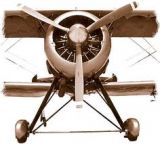- Forum
- General Discussion | Introductions | Off Topic Forum
- Photography General Discussion
- Anyone understand what 'bias frames' are?
Anyone understand what 'bias frames' are?
-
 Topic Author
Topic Author
- KZAM
- Photography Hooked
-
- GH5 and D750
- Followers: 110
- Posts: 607
-
Points:
2904
Post #280921
I don't need no stink'in Signature! ha ha ha
-

- cod
- Snapobsessed
- Nikon D300S
- Followers: 71
- Posts: 484
-
Points:
1165
Post #280977
When photons of light from the subject fall on the camera sensor, the sensor generates electrons, the sum of which carries the image information. Brighter sources generate more electrons and so on. Theoretically, then, if no light falls on the sensor, no electrons should be generated.
In reality, though, this is not the case. Various fluctuations and irregularities in the circuitry cause random electrons to be generated by the sensor independently of the image source. These random electrons are essentially noise in the image. The amount of this type of noise generated is very small. For typical pictures, where the subject is relatively bright and exposure times short this type of noise is essentially meaningless, being overwhelmed by the amount of information generated by the subject.
In astronomical imaging, however, that is another matter. Astronomers photograph very faint objects with exposure times that can be measured in hours. The sensor noise can combine with image data in a way that interferes with the desired signal. Given that such images are often used to measure brightness of astronomical objects any external noise must be eliminated.
Astronomers make use of bias frames, dark frames and flat frames to determine the noise characteristics of the sensor being used. The noise can then be subtracted from the captured image data.
Bias frames are essentially images taken with almost zero exposure time. They are intended to determine the unevenness of the sensor. In the same way that a white sheet of paper is not perfectly evenly white across its surface a sensor with no light falling on it does not read a perfectly even values across its surface. The data from bias frames can be used to cancel out this unevenness in images.
Dark frames and flat frames are similarly used to cancel out random noise generated by hot pixels and similar and by distortions introduced by other sources, e.g. vignetting from the telescope tube.
In scientific and high quality astronomical images the use of these calibration frames is essential. For ordinary photography I don’t see any point. Even in regular night photography the subjects are relatively bright compared with faint astronomical objects. We are usually photographing lit up objects in the night, not the darkness itself. I’ve never heard of anyone worrying about this for regular photography.
- Forum
- General Discussion | Introductions | Off Topic Forum
- Photography General Discussion
- Anyone understand what 'bias frames' are?
Latest Reviews
The Olympus Pen E-P7 is an affordable micro four thirds mirrorless camera with 4K video capabilities, a 20.3MP sensor, and 121 focus points, making it a solid entry-level camera for beginners.
The Panasonic G9 II is a 25.2-megapixel micro four thirds camera with numerous features that make it punch out of its weight class, like 779 AF points, 5.8K video, and weather sealing.
The Fujifilm XT5 is a 40MP mirrorless camera capable of 6.2K video at 30p. With those specs, it’s an ideal choice for photographers needing a camera to pull double duty for imaging and video.
The Canon EOS R100 is an entry-level mirrorless camera introduced in 2023. But just because it’s an entry-level camera doesn’t mean it’s a bare-bones camera. Find out why in this review!
Forum Top Posters
-
1Scotty 9 posts
-
2Roman Omell 4 posts
-
3Razky 4 posts
-
4Pat White 3 posts
-
5CharleyL 3 posts
-
6ShutterPal 3 posts
-
7Ruby Grace 3 posts
-
8Roger Lang 3 posts
-
9Nefarious 3 posts
-
10Jim Photo 3 posts
Latest Articles
Upgrade your kit in 2024 with the best intermediate camera on the market! The question is, what camera fits the bill? We’ve got three top options for you to choose from in this buyer’s guide.
The best photography jobs right now are a mix of tried-and-true gigs like wedding photography and new jobs highlighting AI’s capabilities, travel, and videography.
The Olympus Pen E-P7 is an affordable micro four thirds mirrorless camera with 4K video capabilities, a 20.3MP sensor, and 121 focus points, making it a solid entry-level camera for beginners.
Starting a photography business is one thing; sustaining your business over a long period of time is another. Use the tips in this professional photography guide to build something with longevity!
The Panasonic G9 II is a 25.2-megapixel micro four thirds camera with numerous features that make it punch out of its weight class, like 779 AF points, 5.8K video, and weather sealing.
Cinematic photography is an interesting genre that combines photographic and videographic skills along with effective storytelling techniques. The result? Highly impactful images!
Newborn photography requires skill, the right gear, and a lot of patience. This beginner’s guide discusses critical topics that will help you be more prepared for before, during, and after the shoot.
To fill the frame means to expand the footprint of the subject in your shot. Get in close, zoom in, crop the image, or use other techniques to bring the subject to the forefront.















